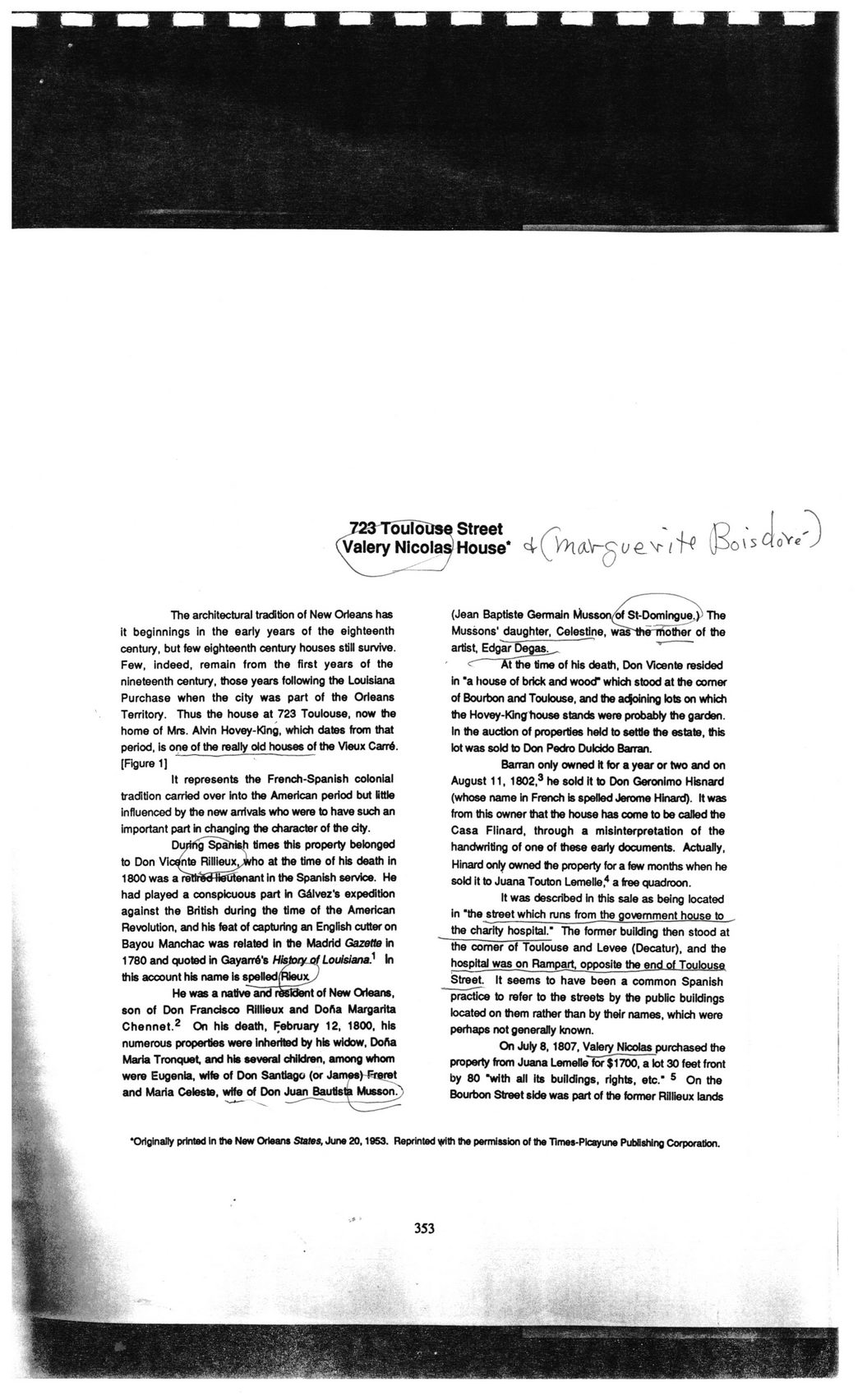This text was obtained via automated optical character recognition.
It has not been edited and may therefore contain several errors.
rouioi 'Valery Nicolas Street 1 House* I 0Ye' The architectural tradition of New Orleans has it beginnings in the early years of the eighteenth century, but few eighteenth century houses still survive. Few, indeed, remain from the first years of the nineteenth century, those years following the Louisiana Purchase when the city was part of the Orleans Territory. Thus the house at 723 Toulouse, now the home of Mrs. Alvin Hovey-tOng, which dates from that period, is one of the really old houses of the Vleux Carr6. [Figure 1) It represents the French-Spanlsh colonial tradition carried over into the American period but little influenced by the new arrivals who were to have such an important part in changing the character of the dty. Durfrig Spartieh times this property belonged to Don Vicente RillieuiyWho at the time of his death in 1800 was a retW5?fietftenant in the Spanish service. He had played a conspicuous part In Galvez's expedition against the British during the time of the American Revolution, and his feat of capturing an English cutter on Bayou Manchac was related In the Madrid Gazette In 1780 and quoted in Gayarr6's Hispty of Louisiana.1 In this account his name is spelled(Rleuxy He was a nativeand rwKfentof New Orleans, son of Don Francisco Rlllieux and Dofta Margarita Chennet.2 On his death, February 12, 1800, his numerous properties were inherited by his widow, Dofta Maria Tronquet, and his several children, among whom were Eugenia, wife of Don Santiago (or James) Freret and Maria Celeste, wife of Don Juan Bautist^ Musson.^ (Jean Baptiste Germain Musson/of St-Domlngue.}- The Mussons' daughter, Celestine, was'theTfiother of the artist, Edgar Degas^ ’ ‘ XTthe time of his death, Don Vicente resided in ‘a house of brick and wood* which stood at the comer of Bourbon and Toulouse, and the acfoining lots on which the Hovey-Kinghouse stands were probably the garden. In the auction of properties held to settle the estate, this lot was sold to Don Pedro Dulddo Barran. Barran only owned it for a year or two and on August 11, 1802,3 he sold it to Don Geronimo Hisnard (whose name in French is spelled Jerome Hinard). It was from this owner that the house has come to be called the Casa Flinard, through a misinterpretation of the handwriting of one of these early documents. Actually, Hinard only owned the property for a few months when he sold it to Juana Touton Lemelle,4 a free quadroon. It was described in this sale as being located in ’the street which runs from the government house to the charity hospital.* The former building then stood at the comer of Toulouse and Levee (Decatur), and the hospital was on Rampart, opposite the end of Toulouse Street. It seems to have been a common Spanish practice to refer to the streets by the public buildings located on them rather than by their names, which were perhaps not generally known. On July 8,1807, Valery Nicolas purchased the property from Juana LemeltefoT$1700, a lot 30 feet front by 80 "with all its buildings, rights, etc.’ 5 On the Bourbon Street side was part of the former Rillieux lands ‘Originally printed In the New Orleans States, June 20,1953. Reprinted with the permission of the Times-Plcayune PubBshlna Corporation

Clifton Plantation New-Orleans-Architecture-(2)